
Totenkaku Royal Chinese Restaurant has over seventy years of history and is a long standing Chinese restaurant. The main restaurant uses the mansion known as ‘Ijinkan’ which was originally built as a residence for a man of German descent F. Bishop, in Kitano, Kobe. Totenkaku is known as a place where one can enjoy the finest royal Chinese cuisine in an atmosphere that is a blend of Western and Eastern architecture. Including the main restaurant, there are three restaurants in Hyogo prefecture, Japan in Ashiya, and Seishin.
Totenkaku is using the PAL-Dashi to monitor their ground meat soup. The ground meat soup is the soup base, ‘Totenkakuno aji’ which means Totenkaku’s flavor and is used for various dishes. For this reason, the soup base flavor should not fluctuate day to day depending on which store it was made. When we rely on our senses, the flavor can be affected by one’s physical condition, or personal differences. Implementation of a concentration meter that can objectively measure flavor was considered.
We asked Totenkaku the reason for selecting our digital model, the PAL series instead of the analog model where one would look through an eyepiece.
“PAL quickly measures with a press of a button and the measurement result can be checked. The fact that it can be washed under running water make is a user friendly.”
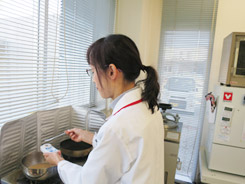
Ringer Hut Co., Ltd.
Mr. Tatsuo Kawauchi from the sales strategy department commented as follows:
Since its establishment, Ringer Hut has focused on providing high quality, tasty, healthy and safe meals using only the freshest ingredients.
Among other ingredients, domestic cabbage, which is eaten every day by many customers, is researched to find the diamond in the rough or the best suitable type of cabbage for ‘champon’ (a noodle dish that is a regional cuisine of Nagasaki, Japan).
Every variety is analyzed for Brix and soil analysis.
Flavor changes not only with variety but is also dependent on factors such as season, locality, and how much time was allowed between harvest and processing. An equation of all the above factors determines just how tasty the end product will be.
Especially, since the cabbage in ‘champon’ is cooked, the nutritional value of the cabbage once it is cooked is also considered to make sure that customers are served the best tasting cabbage.
Nevertheless, Ringer Hut sincerely feels that their pursuit of delicious ‘champon’ and delicious cabbage will eventually help support the farmers of Japan, who, in recent years have been experiencing problems due to lack of successors.
In the pursuit of delicious flavor and sustainable supply, contract farmers are absolutely imperative.
While experience is of course essential, objective numbers are necessary in the pursuit of delicious flavor.
For instance, a Brix meter is used to measure Brix, which is an important factor in determining the taste of cabbage. Similarly, concentration meters and salt meters are used during the product development of soup and ‘tare’ (dipping sauces). Objective figures are indispensable as they are important points in defining what tastes good and help maintain consistent flavor.
While ensuring food safety and security, and pursuit of delicious flavor, Ringer Hut will continue to strive to grow with the support of our customers and contract farmers.
Thank you for your continuing patronage.
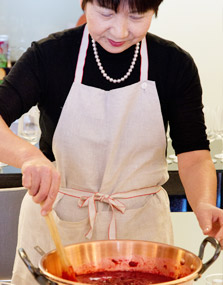
Has been making confiture (jam) for over thirty years.
In addition to the products sold under the name “Mrs. BERRY”, cultural lessons are held at the NHK Culture School (Minami Aoyama school • Yokohama Landmark), Mitsukoshi Culture Salon and Shinjuku Gyoen National Garden.
Each individual jar of jam is made with fresh seasonal fruits and has no additives or preservatives.
Without additives and preservatives, the jam’s taste is determined by the flavor of the ingredients and an adequate amount of sugar.
When making jam for someone else, it should taste good right? We hope everyone will try “Mrs. BERRY” and enjoy the flavor and not that of jams that are too sweet.
The Brix meter PAL-Patissier is very useful with its professional specifications making for an unbreakable taste. Jams are made to reach 50% Brix which is said to be the most delicious level of sweetness.
During the cooking classes at culture schools, the PAL-Patissier is used to convey to the students the amount of sugar added. The digital display is very convenient to visually show measurements to students.
Mrs. BERRY uses ingredients to make jams such as red rhubarb and Bramley apples (green apple) which are not commonly found in Japan. Mrs. BERRY also makes jams in which sour plums are purposely used to create fun and delicious confiture of which one can never get bored of.
Each and every jam is carefully made one by one and we hope to continue making confiture that is not just simply spread on bread but a jam that can be also appreciated with food.
Thank you for your patronage.
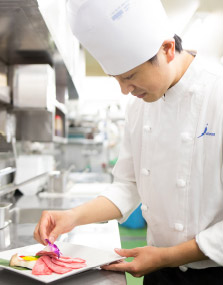
Jojoen's Pride
That is, the best service comes from superior quality, astringency, and delicious flavor.
At Jojoen Food Factory, meat and vegetables are processed and ‘tare’ (dipping sauce) is manufactured before being delivered to each of their stores and customers.
The acquired skills of making ‘tare’ (dipping sauce), sauce makers discern the slight differences with the change of season, the effects of temperature and time, and are even particular about how the bubbles break and pop on the surface of the ‘tare’ (dipping sauce) when being boiled down. ‘Tare’ is manufactured using years of experience and intuition that cannot be learned from manuals.
In pursuit of the best flavor, a concentration meter (PAL-Pâtissier) is used to monitor and subtlety adjust the flavor of tens of various kinds of ‘tare’ sauces daily.
This is because when making changes in flavor, the differences between the current and previous recipes are comparatively checked by numbers.
While largely relying on the experience gained from years of sauce making, the objective measurement values of the PAL-Pâtissier is used to check the flavor when making adjustments.
From here after, as a Japan Brand ‘Shoku’ (foodies), we will continue to explore and transform each and every day in order for our restaurant to remain a special place to all of our customers.
Thank you for your continuing patronage.
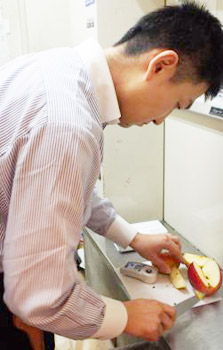
Fundada en 1894, GinzaSenbikiya es una conocida tienda de fruta de la especialidad en Japón con una larga historia. GinzaSenbikiya exhibe frutas de temporada de alta calidad en el escaparate y ofrece una gran selección de dulces llamativos envueltos cortésmente en conjuntos de surtido.
La preparación en GinzaSenbikiya comienza antes que las frutas estén en temporada.
Dependiendo de los tipos de fruta, la duración de la temporada es diferente; algunas duran dos semanas, otras pueden tener una temporada más larga de dos a tres meses.
Compradores viajan alrededor de todo el país utilizando la red de la cadena original de suministro antes de las frutas de la temporada lleguen al supermercado.
Durante la selección de frutas, un comprador observa el aspecto, color, forma, sabor, fragancia, y textura. Se dice que se puede aprender mucho simplemente sosteniendo las frutas usando las manos. Por ejemplo, los cítricosque se siente relativamente húmedos y masticables tendrán cascara delgada y sabor delicioso.
La labor de un profesional es clasificar buenas frutas de las malas, examinado el peso, la textura y el ajuste en las manos.
No importa que tan cuidadoso uno desarrolle un sentido agudo de olor y buen ojo, la preferencia personal de sabor es un factor difícil de eliminar. Una medición de Brix numerable es un importante índice que permite seleccionar fruta objetivamente.
Las frutas seleccionadas por un comprador son recibidas y ahora, una batuta de mando se pasa de un comprador al equipo de ventas. Cada vez que llega la fruta, el equipo de ventas mide y registra los grados Brix con un PAL-1. Adicionalmente, para mejor entender y comprender los efectos de las estaciones del año y cambios regionales,Brix es medido para observar los cambios correspondientes.
Los clientes frecuentemente consultan sobre Brix. Los Brix se midencon anticipación para prepararse a fondo para cubrir la demanda de la petición del cliente.
Pudimos conversar con el asistente de gerente de la tienda, Sr. Sawada de GinzaSenbikiya. Gracias por su cooperación.
Gracias por su continuo patrocinio.
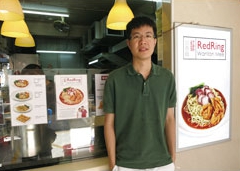
We interviewed Mr Roy Chan, who runs a noodle shop in Singapore.
We have been using the Atago saltmeter and refractometer for the past 5 months and are very satisfied with their performance.
We have been using the saltmeter to assess the saltiness of both our soups and noodle sauces during recipe development and also for daily consistency checks.
Our business currently produces 200kg of noodle sauces per week and these Atago meters are indispensable in helping us to ensure the consistency of our sauces.
Additionally, Atago's refractometer comes in handy in making sure that our soup is boiled to the right concentration.
By assessing the refractometer readings, we can take corrective measures of either boiling down or diluting with water in order to achieve our desired consistency.
We strongly recommend the use of Atago's meters for restaurant owners and sauce makers as a means of ensuring consistency in their sauce and soup products.
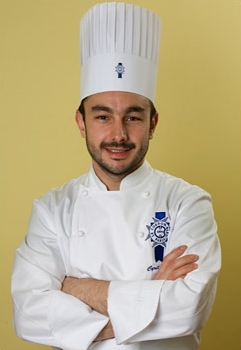
Le Cordon Bleu was established in 1895 as a culinary institute specializing in French cuisine, art, and culture.
At their confectionary school, they use our pocket refractometer PAL-Pâtissier and our digital pH meter DPH-2 during their lectures for confections or for baguettes.
We interviewed one of the lecturers, Mr. Garcin.
ATAGO's PAL-Pâtissier is an irreplaceable teaching tool for us. It can measure and display Brix and baume scales in just few seconds, which enriches the understanding of our students. The readings are very quick and accurate, especially on the Brix scale; it can measure from 0.0 to 85.0% Brix.
It can even be cleaned under running water, making the maintenance process very simple and efficient. It is a very valuable tool in our lab.
There are several industry requirements regarding pH level when manufacturing French breads, especially the kinds that use levain (leavening agent). That is why we initially started using ATAGO's digital pH meter DPH-2.
This instrument is very easy to operate. All you have to do is press the button, and it displays the pH level. The digital readings are quick and accurate.
Even its shape is very manageable; after it has been washed, I can just slip it in to my pocket to carry it with me at all times.
I strongly recommend this product, especially to measure the pH level of levain which is a requirement in bread making business.
【French Campus】https://www.cordonbleu.edu/paris/home/en
【Japan Campus】https://www.cordonbleu.edu/japan/home/ja
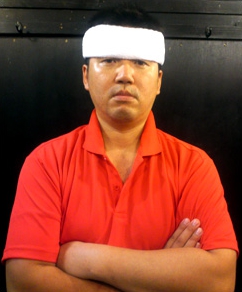
Ramen-loving CEO Mr. Kazuhiro Terada owns and runs ramen shops in Abiko city and Mito city. Since "Kannana" is a nickname for a highway, people may wonder why a restaurant in Abiko (unrelated to the highway) might be named "Kannana Ramen." This store has a history of apprenticeship with a famous ramen shop by Kannana called "Tosakko Ramen"; the name is symbolic of this tutelage.
Mr. Terada began using Brix meters once he started to manage multiple locations.
We first met Mr. Terada when he contacted us saying that "the readings on the demo unit are inconsistent."
"Teraccho" ramen is characterized by their extra-thick broth made with plenty of pork backfat.
The "extra-thickness" of their signature broth became a problem when trying to use it on a refractometer; sample was so murky that it didn't generate a clear reading.
Because Brix meters are based on light refraction, extra-thick broth would only show fuzzy boundary lines, resulting in instable readings.
Mr. Terada demoed several different models to no avail, but he did not give up.
When he asked us if we had any other models that might work, we suggested "Rice Moisture Checker G-50," granted that we've never tried this model for such application. This unit is typically used to measure Brix% of rice and converts the reading to rice moisture level, so it generally gives a stable reading for white, murky samples. The "G-50" model successfully showed consistent readings for Mr. Terada's broth, and he implemented the unit for his stores.
We interviewed Mr. Hideyuki Kato from Abiko Location.
They use "MASTER-Ramen α" for their lighter broths.
QWhy do you use Brix meters?
AWe didn't really need it when it was just one location, but when we branched out to multiple locations, it became necessary. It is difficult to train others to recreate the same taste.
QHow many people are in charge of making the broth?
AAt our Abiko store, about 7 to 8 people. Even when I'm not at the store, they can call me and describe the color and the Brix level, and I can give them directions. When I'm in charge of the broth myself, I've began to be able to guess its Brix range. I believe this is possible because being conscious of the Brix scale gave me a reference point for consistency.
QAt what stage do you take measurements?
AWe measure the Brix at the final stage of boiling down the broth. We get it to about 10-11% and freeze it, and the next day we add it to the broth from the day before. We also take measurements when there is a high possibility of fluctuation, such as when we open, when a staff ends his/her shifts, or when we use a broth prepared on a different day.
QWhat do you find important in running a ramen shop?
AFlavors change with even the smallest factors. Each of our branch stores has their own signature taste.
No two ingredients are the same, and surrounding temperature and humidity change each day, so it is very challenging to keep recreating the same taste, even within the same branch store. That is why we keep trying hard all the more.
We also have variety of choices of noodle firmness, amount of fat, and flavor intensity to satisfy each customer's preference.
Ramen with generous amount of pork fat. Their signature Char Siu is so big that it protrudes from the bowl. For the first bowl they serve thick noodles, and skinny noodles are served for seconds.
The taste is addictive and unforgettable!
We really enjoyed their specialty ramen. They clearly are very passionate about the quality of their products, and we hope that everyone will have a chance to visit them.
The taste of Tosakko ramen was something unique to that store. Because it is impossible to recreate their flavor, we came up with a unique one of our own. Mito store specializes in miso ramen, considering the trend in the neighborhood. Our neighborhood of the Abiko store is a high-competition area for restaurants, with many popular franchise restaurants as well as numerous ramen shops. If we are to be successful in multiple locations, we need to make each one the most popular one in the neighborhood. Brix meters are essential to maintain our flavor.
【Abiko Location】Rich Pork Fat" Kannana Ramen Teraccho
【Mito Store】Edo Miso Ramen Teraccho II
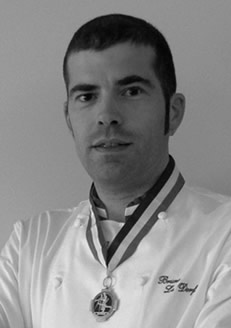
Mr.Bruno LE DERF
International consultant for Pastry
Chocolaterie
Candy and Ice cream
QHow user-friendly is Digital Hand-held "Pocket" Pâtissier Meter PAL-Pâtissier?
AThe PAL-Pâtissier is one of the essential tool in our kitchen now. It's very easy to use, easy to clean. We can measure in a few second the Brix and the Baume degree. For my case , I use almost every day. Compare to the old manual refractometers, the scale of the Brix with the digital is more precise and easier to read. With only one tool, we can measure from 0.0 to 85.0 Brix. The measurement range is wider than the manual. We can also measure the Baume degree for all the syrup of sugar.
It's useful now for all our work of candy, pastry and ice cream.
We appreciate your continued support of ATAGO refractometers.
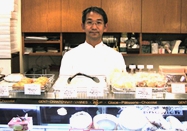
Cake shop Patisserie Park is located in Takatsu neighborhood in Kawasaki City, Kanagawa-ken. It is a five-minute walk from Takatsu station.
All of their products are very popular. Their shortcakes and Mont Blanc are an all-time favorite, while more modern French-influenced cakes are just as popular. They also carry other baked goods and ice creams.
We had an opportunity to meet with the Managing Chef Mr. Tetsuhide Park.
Mr. Park learned the basic skills of pâtissier during his apprenticeship under Mr. Masanori Yamato. He then trained for two years in France and Belgium to further his techniques in cake making. Once he returned to Japan, he became independent and opened his shop Patisserie Park in Takatsu. He is now the Managing Chef.
QWhat do you find important when making desserts?
AI put much emphasis on smooth texture. How something tastes is largely effected by temperature and texture. When a food is soft it seems sweeter for how much sugar it contains, yet amount of sugar can't be cut down to maintain richness. As a pâtissier I always strive to achieve the perfect balance of sweetness and softness.
QWhy do you use refractometers?
AAs a professional pâtissier, I value consistency. Because I have many employees producing our pastries, it's inevitable that subjectivity affects parts of the process. For example, we used to sample creams on our hands to assess its firmness, but we realized that everyone makes and assesses them a little differently. Therefore, we started using refractometers to give our products an objective value so that they all have consistent taste.
Also, we use refractometers to balance out sweetness and texture. Because texture is so important to us, we use Brix to check evaporation and concentration to assess how firm the products will be.
QSo you use refractometers to check texture?
ASweetness is of course important, but taste and texture is so closely related to each other that it's really important to check firmness.
Even if something is made using a same recipe, if it's too soft its sweetness is emphasized, making it taste too sugary. On the other hand, if it's too firm sweetness is less prominent. Using refractometers we've determined at what Brix value sweetness and texture balances out the best - we always take measurements to check firmness.
QWhat is the key when taking measurements?
AWe make sure that all employees follow the same procedure when using refractometers. We all use refractometers here so it is important that everyone follows the same procedure for consistency. Result may vary if we don't all follow correct procedure. Providing customers with assured consistency is part of being a professional pâtissier, so I make sure every employee uses refractometers in the same correct manner for maximum accuracy.
QWhat else do you use refractometers for?
AI also use it when I am testing out new products. By experience I can, to a certain extent, make a good guess of what the finished product might taste like. Then I take good note of ingredients and Brix values, making adjustments and testing it each time until it reaches perfection.
We had the opportunity to tour Mr. Park’s kitchen. He showed us how he makes “glaçage cacao” (coating chocolate).
The completed glaçage is used to coat Chocolat d’Amor.
The firmness of the chocolate (in other words, Brix) affects the coating process and texture of the cake.
What an adorable cake!
Another cake, Piedmont, also is tested by ATAGO refractometer. Our hand-held refractometer N3 is used to measure the caramel-chocolate that is inside the cake.
They also use our hand-held refractometer N-1α for their ice creams. As with the cakes, Brix is used to determine the firmness of ice cream.
With this interview, we were able to witness the professionalism of Mr. Park, which was a very inspiring experience. He values customer service above all, and he works hard to consistently provide customers with delicious sweets. We were able to experience true professionalism.
Testing Brix to check food texture – it was surprising to find that texture and taste is so interrelated. Indeed, there are many applications for refractometers.
Mr. Park, thank you very much for your time and for the delicious cake.
We appreciate your continued support of ATAGO refractometers.
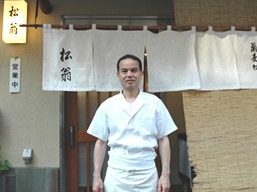
"Te-uchi ('Handmade') Soba - Matsuou" is a very famous soba shop in Kanda Sarugaku-cho, Tokyo. It's been featured in various media including a book written by well known author Shotaro Ikenami.
They use our refractometers to measure concentration of “dashi” or soup stock, which plays a vital role in their house soba sauce.
The restaurant is located in a quiet alley in Shirayama street, near Suidoubashi station.
Today, we had an opportunity to talk with the owner, Mr. Matsuo Onodera.
Today, we had an opportunity to talk with the owner, Mr. Matsuo Onodera.
QWhen was Matsuou established?
AOn November of 1981. I became independent when I was 31. Originally, it was a smaller shop of about 18 seats. We moved to our current location in 1998.
QWhat is the origin of the name?
AMy father named it after my name Matsuo.
QWhat's special about your soba?
AI am very particular about the quality of ingredients I use.
For one, I do not use any artificial flavoring. Before becoming independent I worked at another soba restaurant, and I was shocked to find out that their "secret ingredient" was artificial flavoring. I knew that it was becoming more common for restaurants to use them, but I promised myself to stick to only natural ingredients.
It was not an easy task though. I had to start from scratch. In one book I read that when simmering dashi, “umami” transfers back and forth between dashi and ingredients. So I thought: “if that’s the case, I want to complete the dashi when its umami is at its peak!”
That’s when I started using refractometers to measure concentration of dashi. Back then I was using an ATAGO N1. I took measurements every 5-10 minutes for two hours, and noticed that concentration does indeed keep changing.
I did a lot of experiments to find out the relationship between refractive index and the timing at which maximum umami is extracted out into the stock. For example, after straining, I taste the bonito flakes to check how much flavor remained. From such experiments I also realized that amount of extraction differs with thickness of bonito flakes, so I repeated the first experiment with various thickness of bonito flakes.
From what I found with all my experimentations, it's best to shave dried bonito very thin, right before use. I've found the perfect balance to be 8% bonito flakes in water, though this could vary a little depending on the quality of bonito.
Now using the newest model PEN-J
QIs 8% high or low concentration?
Also, is this confidential information?
AI think it's higher than average. Typically it is about 4 - 5%. This is not confidential; even if someone tried to make their stock with 8% bonito, they wouldn't be able to make it the same flavor as mine. I think it's important that everyone comes up with their own flavor.
(Mr. Onodera checks his notebook that has all the measurements recorded. )
For example, even with same ratio and recipe, dashi concentration can vary by day, as I've recorded here - 1.3%, 1.4%, 1.7%. There are various factors, such as when and where the bonito was caught, as well as flavor and fat content of bonito. Also sometimes bonito can be more salted than others, which can affect the flavor.
QIs there a way to differentiate better quality bonitos?
AYes, I examine by its texture, firmness, and sound. At first I had no way of telling. I visited Kyushu, Sapporo – known as Japan’s best production site of bonito flakes - to learn all the tricks.
Another important component of dashi is konbu (seaweed). I don’t measure refractive index for konbu-dashi because the concentration is typically very low. When our shop first opened, we were on a budget so we were using inexpensive Hidaka konbu to take dashi. From there I progressed to Rikyuu konbu, and now I’m using an all-natural konbu from Hokkaido.
QWhat other ingredients are important?
AFor condiments, I also only use brands that use all natural ingredients. I went to all their manufacturing sites to make sure it was really what I was looking for.I am also very particular about the shrimp I use for tempura. I used to use frozen shrimps, but with those the tails come out dark when cooked. Only fresh shrimps have that pretty red color. So I started buying fresh shrimps, but the problem with that is the inconsistency of stock and high cost. As a solution, I installed a fish tank in my store so I can keep live shrimps on hand.
Another very important ingredient is buckwheat flour that I use to make soba. I import it directly from a farm in Ibaragi. I also make a visit there periodically.
I found that right after rainy the season, noodles tend to break apart easily. Same happens when you leave it too long after it has been ground. I installed a flour mill at the shop so I have fresh ground buckwheat flour daily. It takes about two hours to grind, and then it needs to be shifted, so we prepare the flour a day ahead.
Flour mill and soba making station is surrounded by a glass so that customer can see the whole process.
Matsuou also has a daily menu, featuring many unconventional flavors of soba.
Mr. Onodera clearly has strong passion for soba, and his attentiveness shows in every detail of soba making process. Much labor and time is put in his product, not to forget the superb quality backed up by his own evaluation. We hope everyone will get a chance to try!
Mr. Onodera, thank you for your time and the delicious soba.
We appreciate your continued support of ATAGO refractometers.
Preserving their traditional taste, Totenkaku is loved by their customers. We hope for your further success and thank you for your continuing patronage.
Please check out Totenkaku’s webpage.
http://totenkaku.com/